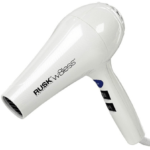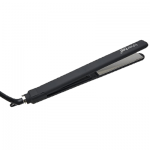It’s likely that you have a love/hate relationship with your magnifying mirror. We don’t blame you! These mirrors showcase everything going on in your skin – blackheads, breakouts, facial hair – literally everything.
As you’re inspecting your skin, you may notice a red splotch on your face. These spider veins on your skin are known as broken capillaries. If it’s your first time dealing with spider veins, don’t freak out! Instead, read on to learn what they are, what causes them, and what broken capillaries treatment is available to you.

What are Broken Capillaries?
Broken capillaries are enlarged blood vessels. They’re located just beneath the skin’s surface and look like bright, spidery red marks. Some people call them spider veins because of the branch-like pattern they resemble.
What Causes Them?
There are a few things that cause broken capillaries—for instance, skin trauma. If you expose your face to hot water, you’re speeding up the blood flow leading to excessive dilation of blood vessels. Other forms of skin trauma include squeezing a pimple with too much force or undergoing intense microdermabrasion.
Other causes include long-term exposure to UV rays. Sun damage can cause broken blood vessels to form. Therefore, one of the best ways to prevent broken capillaries is by wearing sunscreen on the regular.
Broken Capillaries Treatment
To minimize the redness on your skin, you can try some over-the-counter treatments that contain anti-inflammatory ingredients. However, the only way to completely remove broken capillaries is to zap them with a laser. This will require a visit to a dermatologist’s office.
If you feel like your skin turns red from every small thing, speak with your dermatologist. It’s possible you may have rosacea. Your doctor will prescribe the right medication if this is the case and offer strategies to prevent it from worsening.
How to Prevent Them From Coming Back
It’s likely you’re not a fan of spider veins or broken capillaries on your face. In this case, there are ways to prevent any more from popping up on your skin.
Here are the top 5:
1. Wear Sunscreen
You’ve probably already heard the importance of wearing sunscreen numerous times. This is because it’s that important. Sunscreen protects skin from harsh UV rays. It’s these same UV rays that weaken capillary walls, making it likely for broken capillaries to develop. To prevent them from coming back, slather some sunscreen on your face each morning.
2. Exfoliate Gently
You don’t ever want to scrub your face with a gritty exfoliator. This will usually do more harm than good. Instead, use a gentle exfoliator. It will remove dead skin cells, gunk from pores, excess oils, and more. If you feel like you need a stronger exfoliation treatment, speak with a dermatologist. Otherwise, you run the risk of broken blood vessels that lead to broken capillaries, among other skin issues.
3. Skip the Hot Water
There is nothing like a hot shower to relax after a long day. However, don’t splash hot water directly on your face. This will speed up blood flow, dilating capillaries. Instead, cleanse your skin with cool water and enjoy red-free skin!
4. Don’t Pick At Skin
Nothing good will ever come from picking at your face and popping your own pimples. Instead, let the zits be – they’ll go away on their own. Or, if your condition worsens, see a dermatologist. The picking may be the reason behind the redness in your skin – you may be breaking blood vessels in the process of pressing down too aggressively on your skin.
5. Drink Cold Water
If your skin gets flushed, hot, and red every time you exercise, keep some cold water with you. Take small sips throughout your workout. This will prevent the breaking of blood vessels over time. When you drink cold water, blood vessels constrict, preventing dilation. In other words, avoid broken blood vessels by drinking up!
Final Thoughts
If, after reading this guide, you’re unsure if you have broken capillaries on your face, make an appointment with a dermatologist. They’ll be able to officially diagnose what’s going on and offer the right treatment for your skin.


